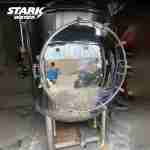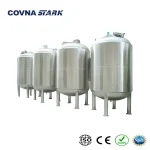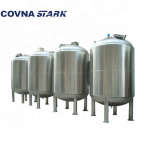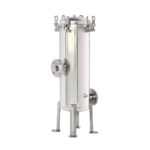1) Footprint and headroom
- Vertical: Smaller floor footprint, requires taller headroom. Ideal for tight rooms, mezzanines, and where floor space is expensive.
- Horizontal: Lower overall height for low ceilings, but needs longer floor space. Good under pipe racks or where lifting clearance is limited.
Rule of thumb
- If clear height is less than about 2.2 to 2.5 m for a 1000 to 2000 L class tank, consider horizontal.
- If floor space is tight but height is available, pick vertical.
2) Process behavior and mixing
- Vertical: Works well with top mounted axial mixers; predictable flow pattern; fast drain with conical bottom.
- Horizontal: Side entry or offset nozzles help mixing; good for large buffer volumes that must fit under height limits.
Tip
Reserve a DN25 to DN40 port for a spray ball and another for an optional mixer mount, whichever orientation you choose.
3) Drainage and hygiene
- Vertical (conical bottom): Short liquid path to outlet; drains quickly; easier to avoid dead legs.
- Horizontal (saddle support): Plan outlet at the true low point and slope internal piping to drain; use dual spray heads for cleaning coverage.
4) Installation and structure
- Vertical: Legs or skirt base; check base flatness and anchor bolts.
- Horizontal: Two saddles with wide contact area; easier to insulate evenly for hot or chilled service; check floor load and anchor plates.
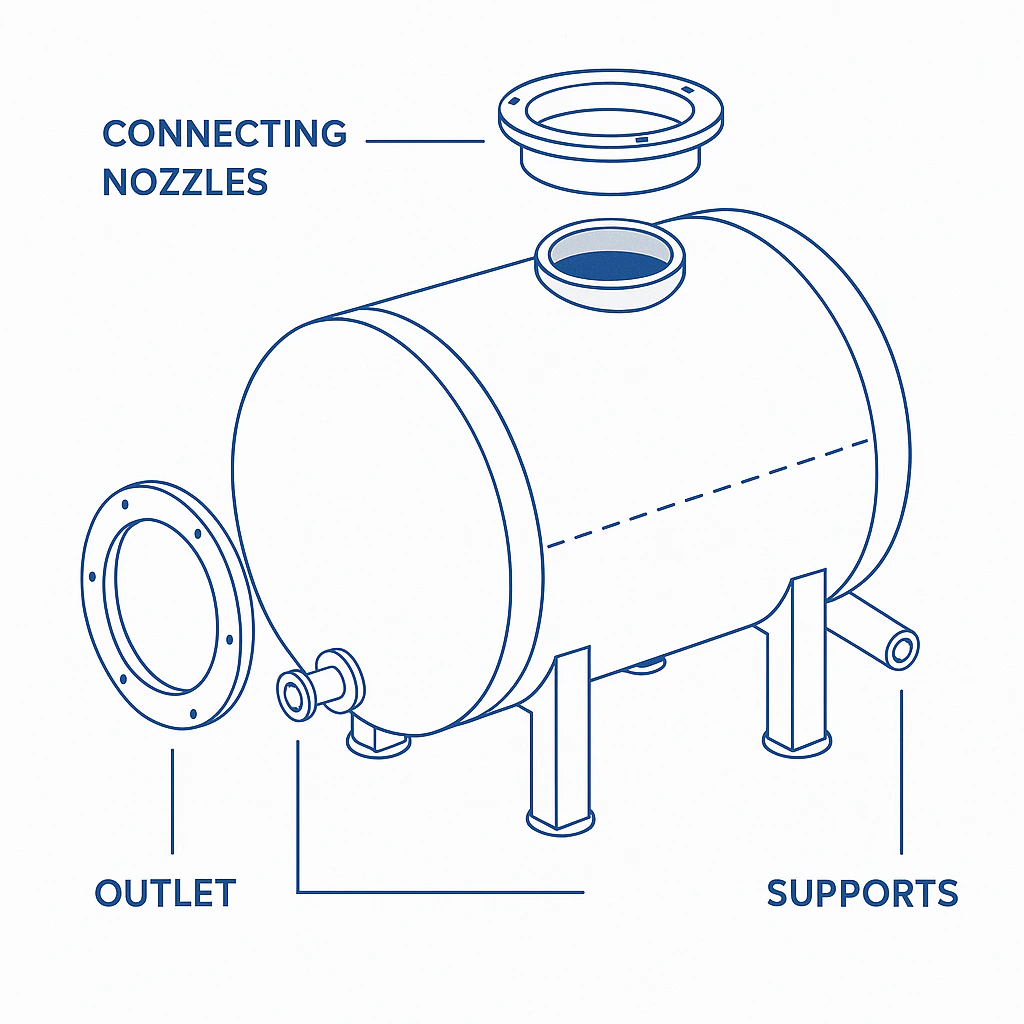
5) Cleaning and inspection
- Vertical: One spray ball often gives full coverage; simple visual inspection through top manway.
- Horizontal: Often needs two spray heads or a rotating unit; side manway helps inspection.
6) Typical use cases
- Vertical: Pharma utility or DI water, beverage process water, compact rooms, fast drain requirements.
- Horizontal: RO buffer tanks, low height plants, large capacities from 5000 L upward, insulated buffer in HVAC or beverage lines.
7) Dimension guidelines (reference only)
Final GA depends on pressure, supports, and nozzle plan. Use these as a starting point.
Vertical tanks
- 1000 L: Dia. 800 to 1000 mm, straight height 1600 to 1800 mm
- 5000 L: Dia. 1500 to 1800 mm, straight height 2600 to 3200 mm
Horizontal tanks
- 1000 L: Dia. 900 to 1100 mm, shell length 1200 to 1600 mm
- 5000 L: Dia. 1400 to 1700 mm, shell length 2600 to 3400 mm
8) Quick selection matrix
| Scenario | Prefer Vertical | Prefer Horizontal |
|---|---|---|
| Room height limited | Yes | |
| Floor space limited | Yes | |
| Fast drainage priority | Yes | |
| Low ceiling under pipe racks | Yes | |
| Large capacity with insulation | Yes | |
| Simple CIP coverage | Yes | |
| Top entry mixer needed | Yes | |
| Side entry mixer or offset lines | Yes |
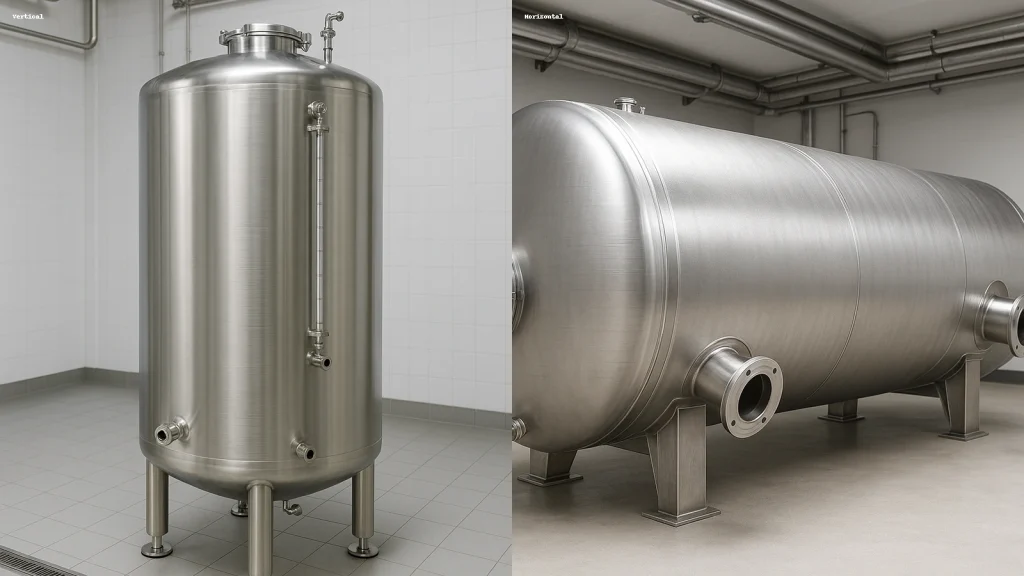
9) Nozzle schedule and options (both types)
- Inlet DN25 to DN40, tri clamp or flange
- Outlet DN32 to DN50 at lowest point
- Vent DN25, option for sterile filter in pharma
- Spray ball DN25 fixed or rotating
- Instrument ports for temperature and level
- Optional coil or jacket, insulation with stainless jacket, level gauge, calibration strip
10) Future proofing
- Add ports for instrumentation now even if not wired on day one.
- For smart monitoring, plan 4 to 20 mA or Modbus for level; consider remote alerts for overflow or low level.
- If chloride exposure may increase, select 316L and a lower interior roughness target.
Related products (replace with your actual links)
- 1000 L Horizontal Stainless Steel Water Tank
- 1000 L Vertical Stainless Steel Water Tank
- 10000 L Horizontal Stainless Steel Tank (insulated option)
Related cases (replace with your actual links)
- Beverage factory — 10000 L horizontal insulated buffer tank
- Pharma plant — 1500 L 316L sterile vertical tank
FAQ
- Which orientation is easier to clean?
Vertical tanks often achieve CIP coverage with one spray ball, while horizontal tanks may require two or a rotating head. - Which one is better for mixing?
Vertical works well with top entry mixers and axial flow. Horizontal can use side entry mixers or offset nozzles to promote circulation. - Can I switch orientation later?
Not easily. Supports and nozzle layout differ. Decide based on ceiling height, floor space, and cleaning strategy at the start. - Do both support insulation?
Yes. Horizontal jackets are simple to wrap evenly; vertical tanks are also common with insulated shells and heads. - What if I need a pressurized tank?
Both types can be designed as pressure vessels. Specify design pressure, code, and test requirements up front.
Call to action
Need help choosing? Send your room sketch and process flow for a quick review.
Email: [email protected]
WhatsApp: +86-18520151000
Last updated: Aug 2025

